Table of Contents
Tents are my home away from home. They are my space to take a well-deserved break and relax after a long day in the saddle.
Having spent hundreds, if not thousands of nights under sheets of expensive, lightweight, waterproof nylon – this is what I know about bicycle touring tents.
Tent Classification
In this article I will reference three different types of tent:
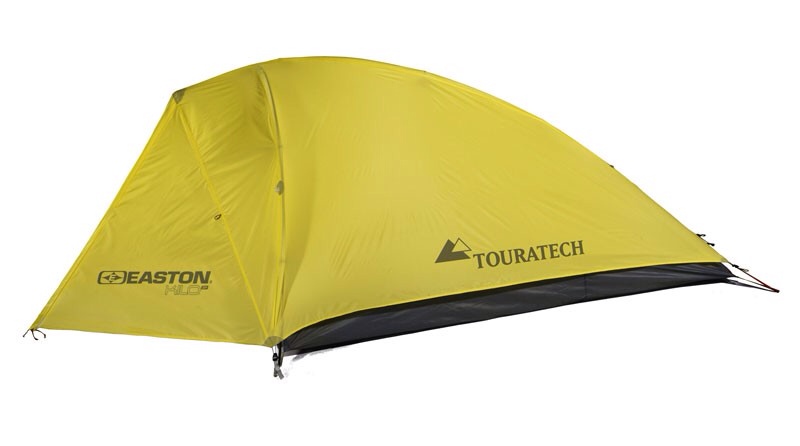
Ultralight: This type of tent favours weight over all other factors. Ultralight tents are great for short trips in good conditions – so don’t expect them to last a long time or be brilliant in wet and windy conditions. A typical problem with ultralight tents is broken poles, so always carry a splint. Typical weight: 800-2000g.
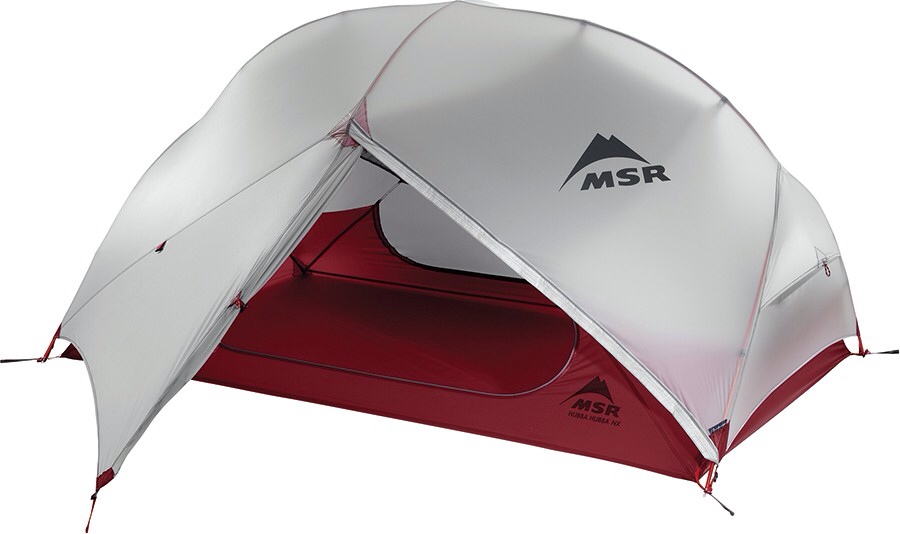
Backpacking: These mid-weight tents pick up some of the key durability features of 4-season tents and place them in a lighter weight and better ventilating package. Backpacking tents are often great for the average bicycle tour, or for longer journeys in warmer climates. Typical weight: 1500-2800g.
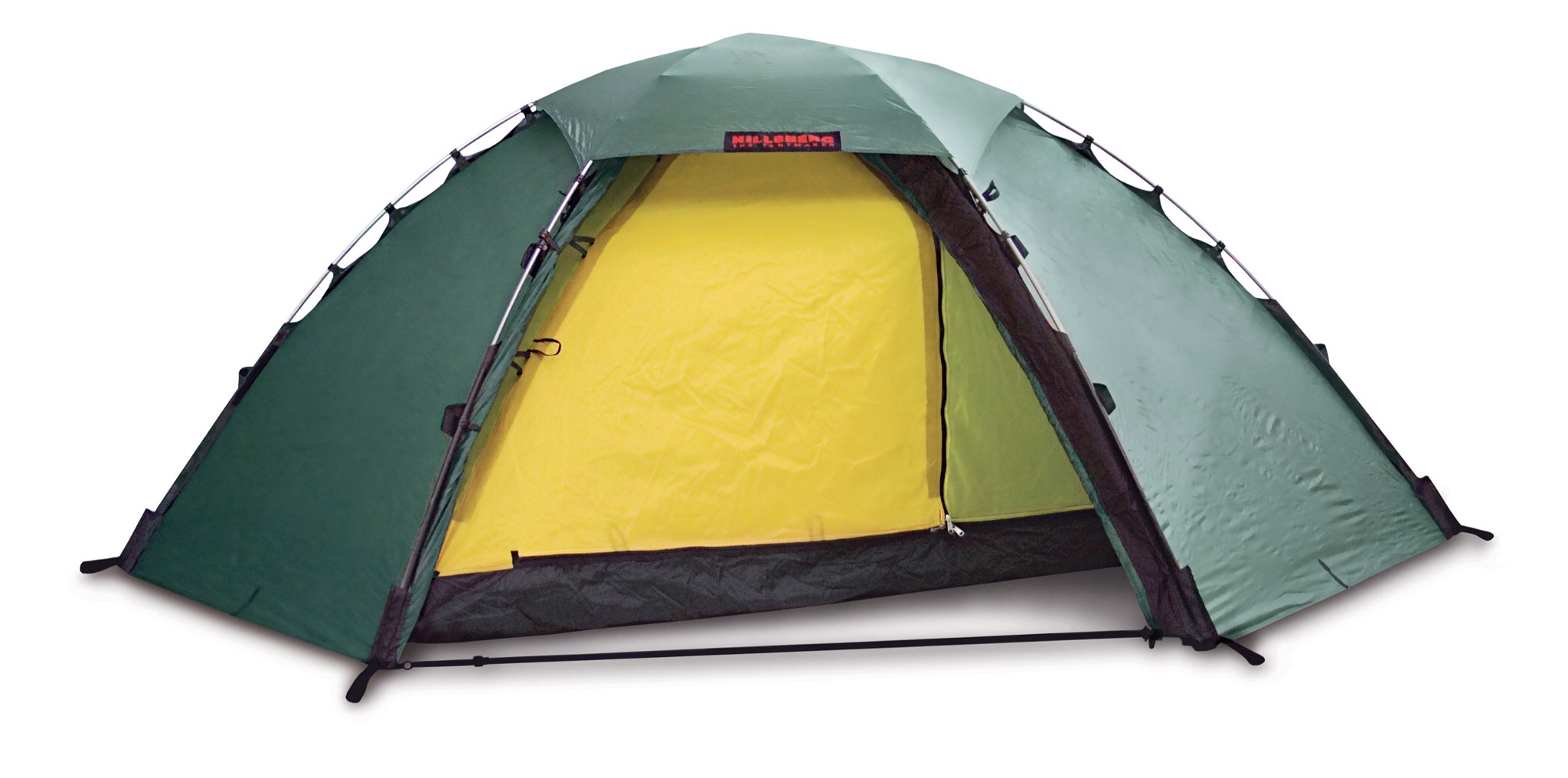
4-season: These tents tend to be most suitable for cool-mid climates and adverse weather conditions. If you’re planning on hitting sub-zero temperatures, snow and strong winds – this is what will work best. 4-season tents are often great for six-month or longer bicycle trips because of how durable they are. Typical weight: 2500-4000g.
Horses for Courses
Ok, so there is no best tent; different tents are better in certain situations.
Most of the time, you’ll need to strike a balance between weight (ultralight tents) and durability (4-season tents). With durability also comes better performance in the wind, tougher, more waterproof floors, and additional insulation properties in cooler climates.
High-quality 4-season tents tend to be expensive, twice the pack weight/size of an ultralight equivalent and perform poorly in warmer climates where heavier fabrics (and reduced mesh) limit the tents ability to ventilate well.
In summary, look for a tent that will suit both the climates you intend to travel through, the types of places you will camp and the number of times you’ll need to use it.
Freestanding vs Tunnel Tents
A great way to reduce your options is to decide whether you’re after a tunnel or freestanding tent.
Why should you buy a tunnel tent?
– Tunnel tents are undoubtedly better in the wind at any given weight (eg. a 2kg freestanding tent vs 2kg tunnel tent).
– The vestibules are often large and great for entertaining/cooking under.
– They’re easy to set up (especially in the wind).
Why should you NOT buy a tunnel tent?
– Tunnel tents rely on being staked out, limiting where you can set them up.
– They’re 20-40% longer in length (bigger footprint) than a dome tent for the same inner size, again limiting where you can set them up.
– Not as good at supporting snow on their roof.
– They’re most of the time single entrance.
– They have a lower, sloping roof; two people sometimes can’t sit up at once, or at all.
– Poorer ventilation than most freestanding tents, especially if your gear is stored in the front and rear.
Why should you buy a freestanding tent?
– They stand without staking, allowing you to pitch them anywhere.
– You can easily pitch just the inner.
– Two entrances is common.
– They often have great ventilation.
– You can pick up the tent, move it, shake it out, clean it etc
– The roof can often withstand snow.
– They’re more spacious internally (eg. headroom).
Why should you NOT buy a freestanding tent?
– Not as good in the wind as a tunnel tent – you’ll need a comparably heavy freestanding tent to do well in adverse conditions.
My take: I cannot imagine travelling with a tunnel tent because I sleep on many surfaces which will not allow pegging – such as a concrete pier or basketball court. Heavy objects can be laid out to hold up a tunnel tent, but I prefer to pop up my freestanding tent anywhere without hassle.
Weight
Tents suitable for bike touring can be as lights as 800g or as heavy as 4000g. When comparing similarly priced products, the weight of a tent is often a good indicator as to how durable it will be.
Heavier 4-season tents employ more poles (that are reinforced) and thicker materials for the fly and inner. As a result, you will probably find a 4-season tent that lasts longer than an ultralight.
Size (1, 2 or 3-Person?)
What size tent is best for bicycle touring? It depends on how long you’re on the road.
On shorter tours (less than six weeks), you’ll be fine with a tent designed for the number of people you’re travelling with (eg. a solo traveller in a 1-person tent, or a couple in a 2-person tent).
On longer tours (more than six weeks) it’s worth getting a tent with a bit more space (eg. a couple in a 3-person tent). The space is nice; I can even fit all of my bags inside my 3-person tent inner with another person, giving me quick access to everything I carry.
Vestibules
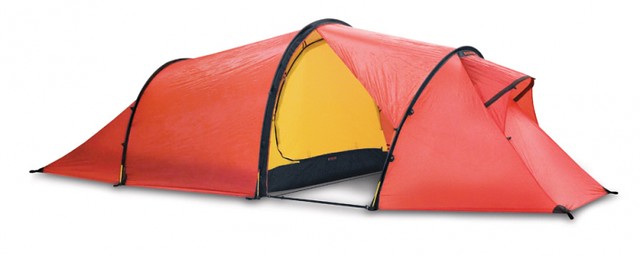
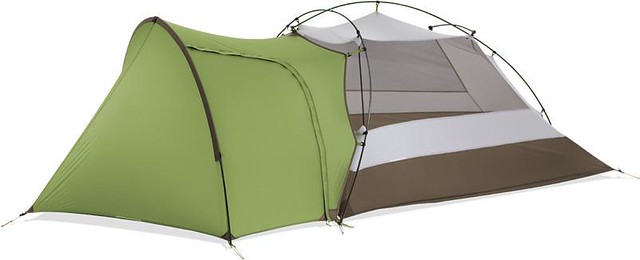
If you will be camping in adverse weather conditions, you may want to consider a tent with large, usable vestibules (or a gear shed). They are great for entertaining, cooking, cleaning or repairing your bike in the rain.
Most freestanding ‘dome’ tent vestibules are actually pretty useless when it comes to their space being usable – tunnel tents with a gear shed are much better. If all you need is to store your bags, dome tents will of course be fine.
Floors
I’ve found that floors are one of the most important features of a tent in wet weather conditions. This is because the pressure applied from your body weight and bags is enough to force groundwater through the floor of most tents with a 5000mm (or less) Waterhead rating.
This is a common problem when you camp on surfaces that don’t absorb water well (gravel, clay, rock, concrete), as the water tends to run under your tent floor and permeates inside.
Ventilation
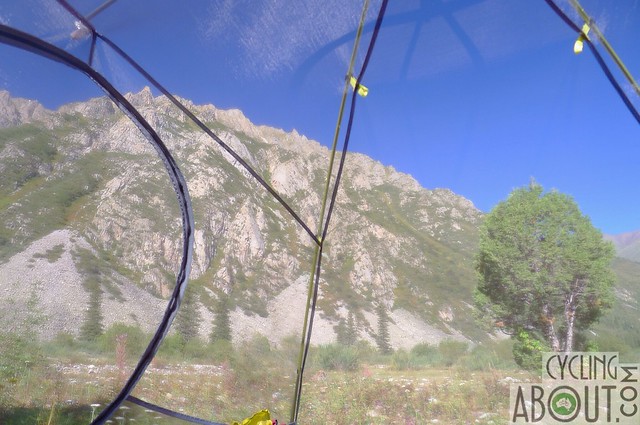
In general, ultralight and backpacking tent inners have more mesh, and 4-season tent inners employ more nylon. As a result, lighter weight tents tend to be better in warmer climates.
Some 4-season tents have nylon panels that zip away to expose large areas of mesh, which increases their ventilation and makes them more versatile. If you’re planning to use your tent in various climates, look out for this feature.
Entrances
Depending on who you’re travelling with, the number of entrances in and out of your tent may be something to consider. It is no doubt less obstructive to have two side doors, where people can enter and exit the tent without climbing over or zipping near somebodies head.
If a tent with two entrances is important to you, you’ll find mostly freestanding tents with this feature.
Clips, Straps, Guy Ropes
The rule here is that simpler is better – complex clips and straps are just asking for trouble and are almost never field repairable.
Ideally guy ropes should attach at two locations on the tent poles, which dramatically increases the stabilisation of the tent in windy conditions. You’ll notice that all 4-season tents have this feature, and high end companies such as Hilleberg, have this feature on almost all of their tents.
Dry Pitch
Some tents are able to be pitched in the rain without getting the inner wet – such as my Mountain Hardwear Skyledge.
The way it works is that the groundsheet and fly can be pitched together, and the inner is brought in later and clipped to the poles. This has been handy for us from time to time but isn’t 100% necessary.
Colour
If you’re wild camping like me, you’ll find that light green or sandy coloured tents are great for a mixture of climates, from desert to forest. Darker green tents are great in thicker wooded areas.
Yellow and red tents do stand out, so only use them if you don’t need to be discreet.
Groundsheets
I love tent groundsheets. These thick material sheets keep my tent inner clean, protect the tent floor from sharp objects and are great to use as a picnic blanket at lunch time.
When I pitch my tent for days in a row, I also throw a groundsheet over the fly to protect it from the sun’s harmful UV rays. They are truly multipurpose.
Summary
Pick a bicycle touring tent which best suits your needs.
If you’re camping in warm climates, an ultralight or backpacking tent will be much more comfortable than a 4-season given the liberal use of mesh.
In adverse weather conditions or if you’re travelling for a long time, a 4-season bicycle touring tent with a gear shed may be beneficial.
Recommendations
For someone…
Who will spend 2-3 weeks touring per year in good weather conditions?
A sub-1500g ultralight freestanding tent designed for the number of people travelling together. Check out the Tarptent Double Rainbow.
Who is on a three month trip in good weather conditions?
A freestanding backpacking tent with space for one more person. Try the MSR Nook, Vaude Hogan, Mountain Hardwear Skyledge or Mont Moondance.
Who is on a three month trip in a cooler climate with a high chance of adverse weather conditions?
A 4-season freestanding or tunnel tent with a gear shed. Try the Hilleberg Nallo GT or Vaude Hogan XT.
Who is riding through lots of deserts?
A 4-season freestanding or 3-season tunnel tent for sure. Deserts are windy! Check out the Hilleberg Nallo or Allak.
Who is on a 12-month plus trip?
Either: Invest, invest, invest in a high-end 4-season tent. A Hilleberg Staika or Exped Venus freestanding tent will cost an arm and leg but you will almost definitely get 1000+ nights out of it.
Or: If your trip will take you through predominantly warmer climates, an ultralight or backpacking tent will be cooler, but less durable. You may have to replace it sometime on your journey. Check out the Mountain Hardwear Skyledge, Vaude Hogan or Mont Moondance.
Reputable Brands
Exped: High quality, high-end tents.
Hilleberg: This company is world-renowned for making some of the best, most durable tents. Don’t expect to end up with change after purchasing one.
Mont: Australian tents which have the magic combination of a 10,000mm floor and lots of inner mesh.
Mountain Hardwear: Although I broke poles and clips on my original Skyledge 3 tent, the replacement tent is very light, easy to pitch and super ventilated.
MSR: Highly popular for a reason – good range, decent quality and ok price.
REI: Great budget tents.
Tarptent: Ultralight tents at a decent price point.
Terra Nova: Super high quality, renowned for their waterproofness.
Vaude: A decent range, high quality and popular for many world tourers.


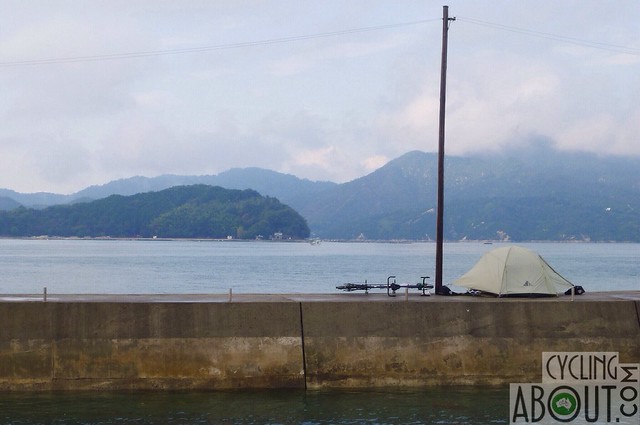
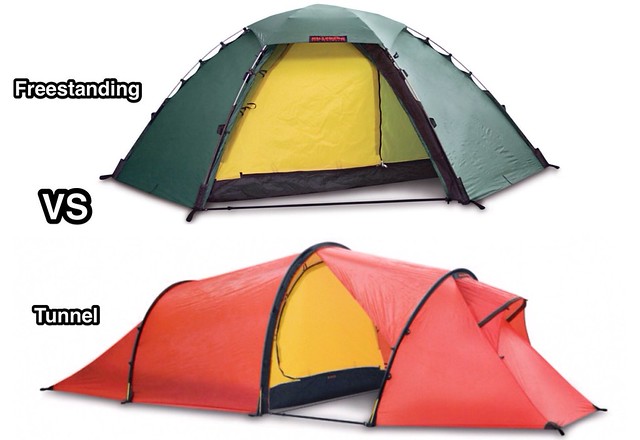
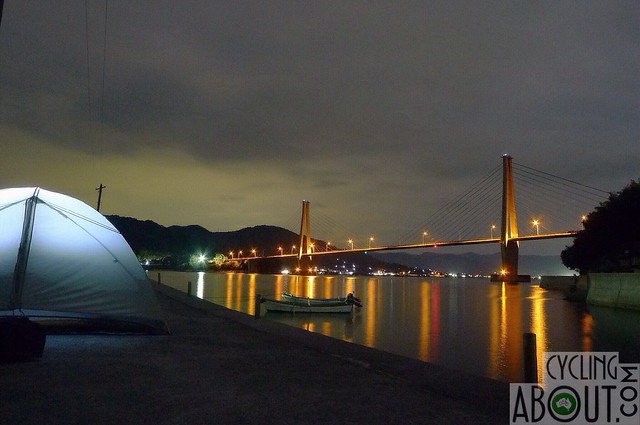

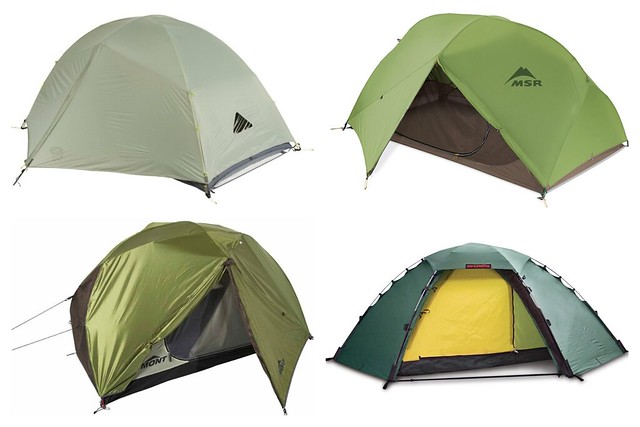

I had a light weight summer hiking tent but it devoloped a hole in the mesh so I am planing on buying a new one. I wasn’t sure if I should get a 3 or 4 sesson tent so I statred to look at some bivys becasue they are small and light, and can be rolled out and climbed into after a long day. They are good for quick sleeps but don’t afford much room for extened stays. I want to ride through the Snowy Mountains and do some hiking just before the ski season. I know a 4 season tent is required and I will buy one, but I still think I should get a bivy sac as well.
There is a tent that really deserves attention, the american-made Tarptent Scarp, It is basically a tunnel tent with central arcg like the iconic Hilleberg atko, but with many improvements, it has entrances and vestibules on both sides, rectangular rather than wedge-shaped and a bit more spatious, they make it for one or two persons bur the solo version can reportedly accomodate two. It is cheaper and lighter than the atko but lighter wieight comes at the cost of less durable materials. It has the wind resilience of a tunnel tent but with two optional bars can be reinforced and transformed into a free standing tent, the best of both worlds type of thing. On the down side, they make only a greyish white colour which may be good to reflect off the sun but doesn’t hel to blend in anywhere.
Thanks for the suggestion!
A very comprehensive guide and Mont is grateful for the mention. Thanks Alee!
Mont Adventure Equipment
A very comprehensive guide and Mont is grateful for the mention. Thanks Alee!
The most important change in tents in decades is just around the corner and it’s name is Dyneema. When Hilleberg makes a big tunnel tent with vestibule and they build the fly out of Dyneema I will Jump on it. 2/3 the weight, totally waterproof and only twice the price!
No mention of Wilderness Equipment out of Fremantle? I used one of their Second Arrow tunnel tents on two long trips – first from Perth to Brisbane and then half-way up South America. In all weathers, it never let me down. Admittedly not the two person tent they claimed it to be, but a very livable tent for one person. It can be pegged out with just three pegs, the floor of the inner can be rolled back for plenty of room for cooking, and the ventilation options make it suitable for almost any climate.
Mine’s nearly twenty years old and not as waterproof as it once was, but I’d certainly buy another.
There’s too many tents to mention! Thanks for the recommendation.